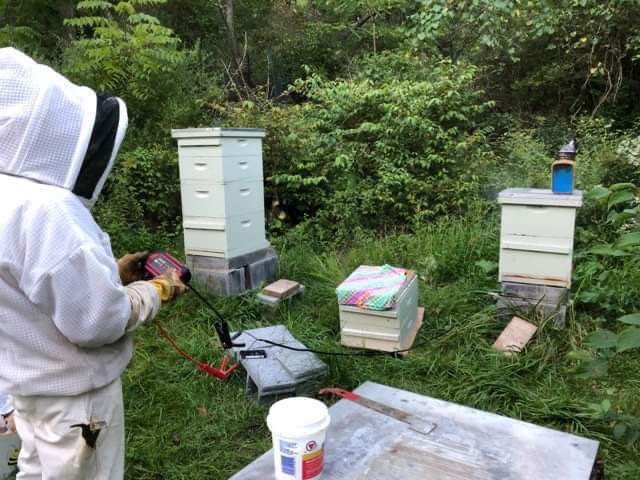Vaping has been in the news a lot over the last few years-- though recently the stories have been about it's decline in the use by young people, which is good news. But what you might not know is that our bees vape... kind of a lot, depending on the time of year.
As we've mentioned elsewhere on these pages, we keep our bees using organic practices. Before I go too much further, let's be clear what we mean by that because there's a lot of confusion in the marketplace and, frankly, a lot of deliberate misleading.
Everything that we give the bees or use to treat the bees is organic, meaning it is derived from compounds that occur in nature. However, it is nearly impossible to label the honey itself as "organic" despite the best practices of the beekeeper because we simply don't know where the bees go when they are foraging for nectar and pollen. They can roam up to 3 miles from the hive! It's virtually impossible to guarantee that not a single foraging bee will encounter a not a single flower with some residual chemical on it from a lawn service company or farmer's herbicide/pesticide.
Having said that, as far as we can tell, our bees are likely using food sources that are organic, including the farms near us (whose crops are rated as organic)... we just can't guarantee it 100%. No one really can.
So what are we treating the bees for?
Well, there are a variety of nuisances that get into the hive and disrupt the health of the bees, but the most common is the varroa mite. They are especially dangerous to the hive in the late summer when the "winter bees" are being raised, because the mites are parasites that eat away these special bees' extra fat bodies and that can cause a complete collapse of the hive over the winter.
To prevent this we use a variety of strategies, but the one pictured here is our typical fall treatment of oxalic acid. The vaporization of the acid into the hive will kill the mites... it also makes the bees a lot happier as a hive with mites in it can develop a bad temperament.
We use a car jump start 12-volt lithium ion battery pack to power the vaporizer.
The vapor is harmless to the bees but we do have to lift off the honey during the treatments (oof, heavy!) so it's a bit of a workout bouncing from hive to hive.
The treatment is repeated every 5 days for three cycles/per hive. This is partly because a certain number of bees end up "locked out" of the hive during each treatment (as you can see them above) and partly because there's always new bees being hatched out.
It ends up being a lot of lifting and time invested, but is necessary for the health of the bees. Often we will repeat this treatment again around Thanksgiving, depending on how the hives have responded to the late summer treatment. We use other methods during other times of the year to keep the hives healthy and happy.
Now if all this talk of vaporizing bees and acid trips have only made you MORE curious and not bored, then I have a treat for you -- you can completely "nerd out" on all the glorious strategies for managing mites and keeping hives healthy by reading this great article from Penn State:
Methods to Control Varroa Mites: An Integrated Pest Management Approach



No comments:
Post a Comment
Comments will be posted once approved by the page admin. For purchases - PLEASE EMAIL at DandelionApiary@Gmail.com - Thank you!